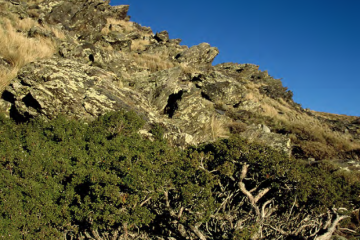The Sierra Nevada Global Change Observtory (OBSNEV) project is monitoring the impacts of global change in socio-ecosystem of the Sierra Nevada mountain range (southern Spain).
One of monitoring methodologies of the project is the monitoring of passerine birds communities. Studies of bird communities in the Sierra Nevada mountain region go back to the 1850s, with the first published records of field observations recorded by ornithologists. Specific studies focusing on passerine bird communities were conducted during the 80s. Monitoring of determined zones allows the assessment of changes in bird communities as the identification of more vulnerables groups to global change.
Assessments of population trends are carried out revisiting some of the samplings from the 80s in addition to other samplings in other areas of the Sierra Nevada. In this dataset we present occurrence data of passerine bird in Sierra Nevada, carried out in different ecosystems. The study extent covers four representative habitats within the Sierra Nevada mountain range: Pyrenean oak forest, thorny thickets on the edge of the forest, common juniper and Spanish juniper scrublands, and high-summit ecosystems. The sampling procedure is the line-transect method with a bandwidth of 50 m, with 25 m on each side of the line. Sight and sound records within the sample area were considered contacts. Transects are repeated at least once per month, snow cover permitting.
Occurrence data of species (with their associated metadata according to the DarwinCore standard), are integrated within GBIF (see collection). A dataset called «Dataset of Passerine bird communities in a Mediterranean high mountain (Sierra Nevada, Spain)» was created for this purpose. This dataset includes a total of 27847 records of the order Passeriformes with 16 families represented and a total of 44 genera. Observations in this collection date from March 2008 to April 2015. For each record, the number of birds and the distance of the contact from transect line were recorded.
Long-term datasets have been recognized as a key component for monitoring biodiversity. It’s important to continue collecting data in order to get a powerful tool to assess population trends and finally, identify the effects of climate change.
Download the DarwinCore archive with data of species occurrence and associated metadata in the next link:
https://www.gbif.org/dataset/bb1c7420-fbb5-46e2-87ad-658081360694
More information about methodology in:
Barea-Azcón JM, Martín-Jaramillo J, López R (2014). Passerines and other birds. In: Aspizua R, Barea-Azcón JM, Bonet FJ, Pérez-Luque AJ, Zamora R (Eds) Sierra Nevada Global Change Observatory. Monitoring methodologies. Consejería de Medio Ambiente, Junta de Andalucía, 86–87 pp. [pdf]
Autores: Álvarez-Ruiz, L; Pérez-Luque, A.J.;



0 Comments